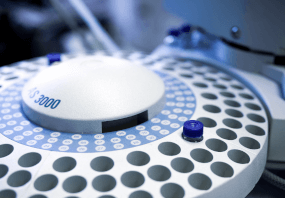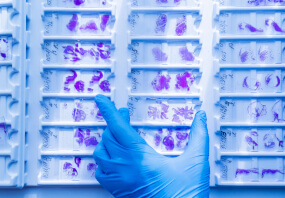Catalase occurs in almost all aerobically respiring organisms and serves to protect cells from the toxic effects of hydrogen peroxide. It promotes growth of cells including T-cells, B-cells, myeloid leukemia cells, melanoma cells, mastocytoma cells and normal and transformed fibroblast cells. Defects in catalase are the cause of acatalasemia, a metabolic disorder characterized by absence of catalase activity in red cells and is often associated with ulcerating oral lesions. Catalase functions as a natural antioxidant, protecting cells against oxidative damage to proteins, lipids and nucleic acids. Catalase has also been used to study the role reactive oxygen species play in gene expression and apoptosis. Catalase activates the decomposition of hydrogen peroxide, a reactive oxygen species, into water and oxygen. Each subunit of the tetramer contains iron bound to a protoheme IX group. The enzyme also strongly binds NADP, which is in close proximity to the heme group. Catalase activity is constant over the pH range of 4.0-8.5. The pI is found to be 5.4. Optimum pH for catalytic activity is 7.0. The enzyme activity is inhibited by 3-amino-1-H-1,2,4 triazole, cyanide, azide, hydroxylamine, cyanogen bromide, 2-mercaptoethanol, dithiothreitol, dianisidine, and nitrate. Incubation of catalase with ascorbate or ascorbate/Cu2+ results in degradation of the catalase molecule.
Shipping Information:
Dry Ice Surcharge & Ice Pack Shipments: $40
More Information: https://cenmed.com/shipping-returns
- UPC:
- 12352204
- Condition:
- New
- Availability:
- 3 Days
- Weight:
- 1.00 Ounces
- HazmatClass:
- No
- WeightUOM:
- LB
- MPN:
- 0219134180
- Model Number:
- C814D71
- Temperature Control Device:
- Yes












